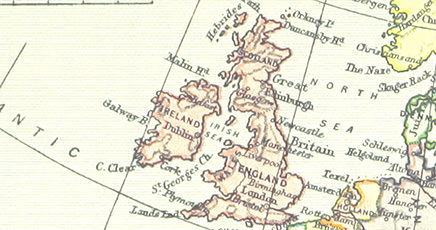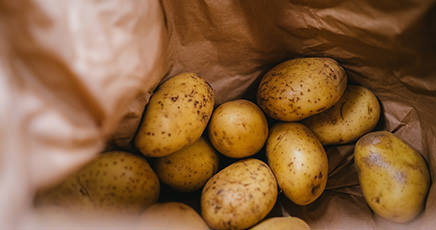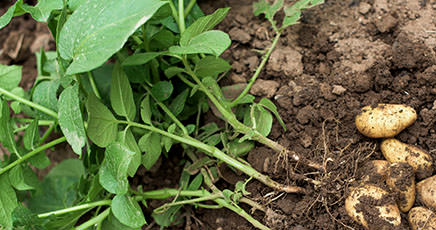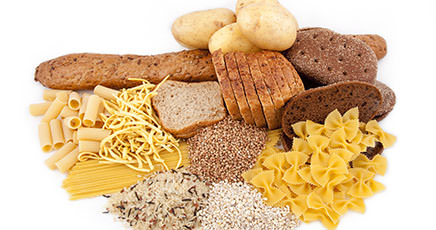Miss Gorman knew the Junior Landcare group really enjoyed the activity grow your own pizza. Before they could make the pizza, the children learnt about where the ingredients came from and how long they took to grow, and how far they needed to travel before they arrived at a supermarket.
The Junior Landcare group wanted to learn more about where their food comes from, but this time on the menu the food was hot chips! Like pizza, some families made hot chips from scratch, while others would buy them from a takeaway shop or frozen chips from the supermarket.
Miss Gorman asked the children “If you were going to grow, manufacture and market your own brand of hot chips, what would you need to know?”
Subsequently, Miss Gorman decided to empower the group to make their own hot chips The children will learn to grow their own potato themselves and learn the process of making hot chips from scratch!

We’re going to investigate food production! In this activity we will be growing potatoes and investigating their life cycles and growing needs.
This learning activity is the first part of a sequence of 3 individual learning activities focused on creating your own potato chips. The order of these learning activities are: growing, cooking, and marketing.
For children to:
- plan a crop
- plant a food crop
- follow the progress of their crop
- study the life cycle and growing needs of a crop
- utilise knowledge about planting food crops from other Junior Landcare activities
- understand that food production takes planning and time.
This activity can be undertaken at any time of year, however where you live will affect your ability to grow potatoes. Tropical zones may not be a good location to grow potatoes, so we suggest substituting these with sweet potatoes instead.
Consult with your local garden centre or use a guide, such as the Gardenate app or use the Gardenate website to help determine the timing, spacing and other elements required for your climate zone.
Introduction
In this activity sequence, children will investigate what would be required to grow, cook and market their own brand of potato chips. For simplicity, we are focusing on the ‘hot chips’ style of potato chip, rather than ‘crisps’.
The process of growing the potatoes takes many months, but children will be rewarded with a wonderful crop at the conclusion of this exercise. We suggest combining this activity with gardening activities such as the Creating a food garden series to help provide the resources and materials needed to produce a crop of potatoes.
* Time allocation reflects the time suggested for learning about potatoes, planting them and completing the activity sheet.
Checklist
Instructions
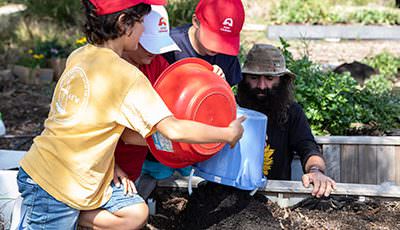
Step 1
Plan
Prepare the soil in the garden bed. Refer to the installing a no dig garden bed learning activity if needed.
Source ‘Seed’ potatoes. Although potatoes can be grown from store-bought potatoes, Seed potatoes are recommended as they are not treated with sprout inhibitors and are sourced from disease free stock. Seed potatoes are available from nurseries and garden centres.
Note: Different types of potato are more suited to some uses than others. Varieties such as Desiree potatoes are good for making hot chips.
Download the Gardenate app or use the Gardenate website to help determine the timing, spacing and other compatible plants required for your climate zone.
If you are in a tropical climate, consider whether sweet potatoes could be a better alternative.
Print the activity sheet and growing guides out for the children.
Draw a large timeline on the whiteboard (you will use this to model the use of the timeline later).
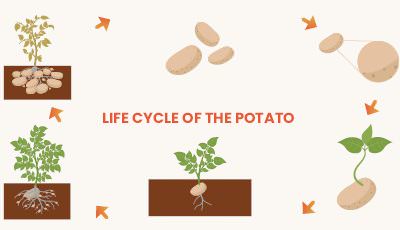
Step 2
Discuss
Ask the children: ‘If you were going to grow, manufacture and market your own brand of chip, what would you need to know?”
Focus the discussion towards growing potatoes and explain that chips are made from potatoes.
Discuss how potatoes grow underground as part of a plant that grows above ground.
If the children are unfamiliar with the concept of how potatoes grow, watch a clip, such as this one from Gardening Australia.
Distribute the activity sheet and growing guide.
Discuss what inputs would be required for growing potatoes:
- Timelines, including seasonal considerations
- Soil, water and care
- Harvesting
- Washing
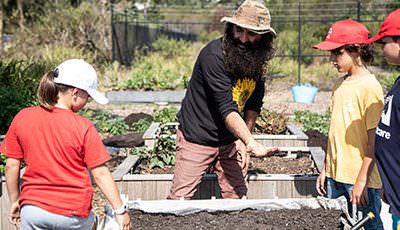
Step 3
Plant
Head outside to the garden.
Model how to plant the potatoes:
Potatoes should be planted in rows. Bury the potatoes 10-15cm deep and space them 30 – 40cm apart. Use rulers to measure depth and spacing.
If your potatoes have sprouted, face the sprouts facing upwards.
Use a digital recording device to take photographs of the children planting or caring for their crop, as this will be used in part 3 of this activity sequence.
Model how to use the activity sheet and work with groups to plant the potatoes, alternating between planting and completing the activity sheet.
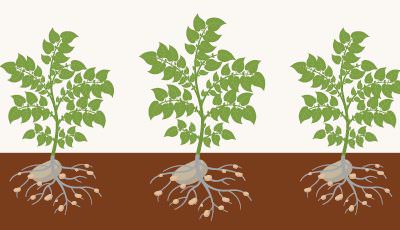
Step 4
Monitor and Care
Use the activity sheet to identify possible challenges that may occur. Discuss factors such as:
- Growing times
- Seasons
- Water availability.
When the potato plants are approximately 20cm high, mound more compost-rich soil around the stem of the plant. This will encourage the plant to produce more potatoes.
Extension Activity
Research how the humble potato has grown in popularity over the last few centuries.
There are many ways to grow potatoes, the simplest being straight in the ground. However, you can help your plants and their yield by using materials such as timber, tyres, and even old pots to create potato towers, which add soil to the growing stem of the potato plant, encouraging production.
Curriculum and Framework Links
SCIENCE
Year 2: ACSSU030, ACSHE035
Year 3: ACSSU044, ACSIS054
Year 4: ACSHE062, ACSIS064
Year 5: ACSHE083
Year 6: ACSSU094, ACSHE100
Year 7: ACSHE120
Year 8: ACSHE135
HUMANITIES AND SOCIAL SCIENCES
Year 2: ACHASSI042
Year 3: ACHASSI052, ACHASSI059, ACHASSI060
Year 4: ACHASSI080, ACHASSK088, ACHASSK090
Year 5: ACHASSI102, ACHASSK120
Year 6: ACHASSI122, ACHASSI130
DESIGN AND TECHNOLOGIES
Year 2: ACTDEK003
Year 3 & 4: ACTDEP017
Year 5 & 6: ACTDEP019
Year 7 & 8: ACTDEK032
HEALTH AND PHYSICAL EDUCATION
Year 2: ACPPS018, ACPPS022, ACPPS023
Year 3 & 4: ACPPS036, ACPPS040, ACPPS041
Year 5 & 6: ACPPS054, ACPPS059
Year 7 & 8: ACPPS073, ACPPS078
ETHICAL UNDERSTANDING
Exploring values, rights and responsibilities.
PERSONAL AND SOCIAL CAPABILITY
CURRICULUM CONNECTIONS
CROSS CURRICULUM PRIORITY
MY TIME, OUR PLACE: FRAMEWORK FOR SCHOOL AGE CARE
Outcome 2 and 4
Reference List
ONLINE RESOURCES
Download the Gardenate app or use the Gardenate website to help determine the timing, spacing, and other compatible plants required for your climate zone.
Learn more about potatoes and how to grow them with this Gardening Australia Fact Sheet.
PRINTABLE RESOURCES
Use this Gardenate Growing Guide to find out more about growing potatoes
WATCH
Use this short video from Gardening Australia to get some ‘hot potato tips.’
READ
Find out more about potatoes and their important place in the history of food production in this BBC Article.
We value your feedback
When you have finished this learning activity, please tell us what you think with our survey.
Your feedback will help Landcare Australia improve the activities in the Junior Landcare Learning Centre.
Why not try one of our other Junior Landcare learning activities?
Love Letters to the Land
Biodiversity|First Nations Perspectives|Food Production|Waste Management
Creating a food garden: vision
Food Production
Creating a food garden: planting
Food Production
Creating a food garden: installing a no dig garden bed
Food Production
